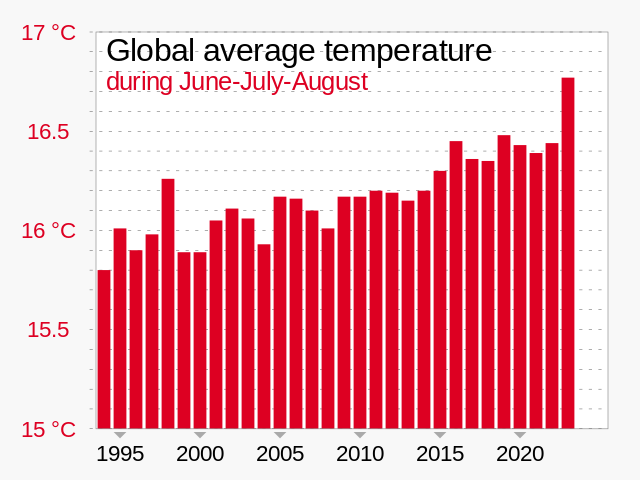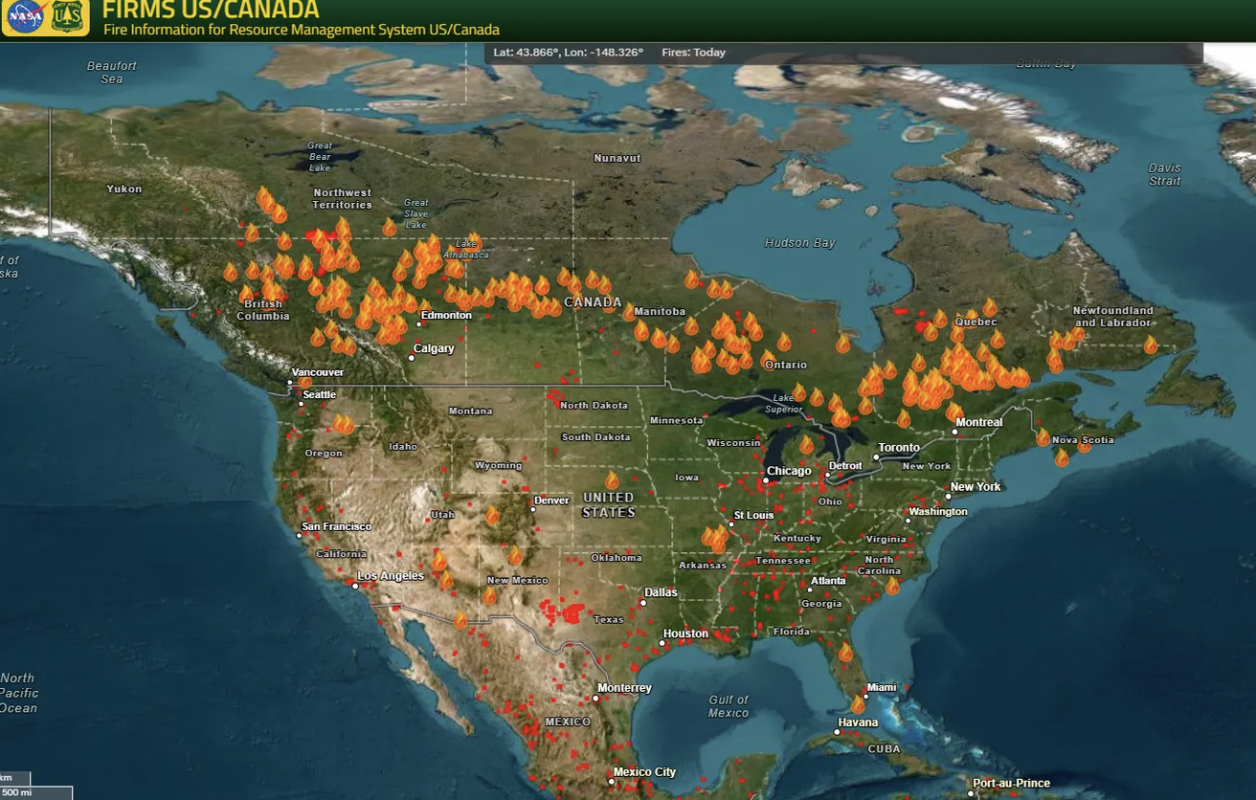 Smoke fills the New York air, fueled by fires thousands of miles away in Canada. Europe struggles through another summer of sweltering heat waves. Death Valley in California records 129ºC! Intense wildfires blaze as countries struggle to deal with large-scale disasters.
Smoke fills the New York air, fueled by fires thousands of miles away in Canada. Europe struggles through another summer of sweltering heat waves. Death Valley in California records 129ºC! Intense wildfires blaze as countries struggle to deal with large-scale disasters.
The summer of 2023 was indeed one filled with extremes. In fact, this summer recorded the hottest day, week, and month in history!
With a whopping average temperature of 16.77ºC (62.2ºF), these past few months broke the previous 2019 record by 0.29ºC. Temperatures in August even reached 1.5ºC over pre-industrial temperatures, threatening to violate the world's goal of maintaining temperatures 1.5ºC below pre-industrial times. Fortunately, this goal will only be considered broken if temperatures consistently reach over 1.5ºC!
Why Was The Heat So Extreme?
The Earth’s temperatures have steadily been climbing with the past seven years being the hottest due to human-induced climate change.
 However, the cause of this year’s record-breaking heat was a combination of climate change and the effects of El Nino. In fact, an intense El Nino cycle has been correlated with record global heat in both 2016 and 1998.
However, the cause of this year’s record-breaking heat was a combination of climate change and the effects of El Nino. In fact, an intense El Nino cycle has been correlated with record global heat in both 2016 and 1998.
El Niño is a climate pattern that affects the globe’s temperatures due to warmer Pacific waters and occurs every 2-7 years. This year marked the return of El Niño after over two years of La Niña, which is the opposite of El Niño and results in cooler ocean waters (read more on El Niño and La Niña cycles, referred to as El Niño Southern Oscillation, and what causes them here).
Generally, El Niño’s impacts include dryer and hotter climate in Canada and the northern US, flooding due to increased rainfall in the southern US and South America, and droughts in Australia.
This year, the combination of climate change and El Niño has had severe impacts around the world because of the extreme weather produced by the heat. Europe and North America faced deadly heat waves that were 2-2.5ºC hotter due to climate change. Meanwhile, Canada, Maui, and Greece all faced intense wildfires over these past three months.
Record-breaking Wildfires
 Canada is currently fighting over 1,000 fires across the country, with 652 classified as out-of-control, marking the nation’s worst wildfire season on record. These fires, which started in July, have burned 37.8 million acres of land and forced 1 out of 200 Canadians to evacuate. On top of that, they have been burning with a 20% increased intensity due to increased heat and decreased moisture from climate change. Meanwhile, due to the sheer amount and intensity, Canadian firefighters are struggling to put them out.
Canada is currently fighting over 1,000 fires across the country, with 652 classified as out-of-control, marking the nation’s worst wildfire season on record. These fires, which started in July, have burned 37.8 million acres of land and forced 1 out of 200 Canadians to evacuate. On top of that, they have been burning with a 20% increased intensity due to increased heat and decreased moisture from climate change. Meanwhile, due to the sheer amount and intensity, Canadian firefighters are struggling to put them out.
At the same time, Maui faced its own deadly wildfires in August labeled “the largest natural disaster in Hawaii state history” by its governor, Josh Green. The most devastating blaze was the Lahaina fire, with 2,710 acres burned and the historic town completely destroyed. Though they are now contained, the fires were exacerbated due to heavy winds from Hurricane Dora nearby, showing how hurricanes and wildfires interact as they become more extreme under a changing climate. Hawaii is left with an estimated $5.52 billion cost in repairs and a death toll of 115.
Greece was also met with hundreds of disastrous wildfires this summer prompting the largest evacuation the country has launched. This is yet another example of the record-breaking heatwaves, wildfires, and floods this summer.
Despite these disheartening events, it is important to remain optimistic. This summer serves as a wake-up call to the intense effects of climate change for both individuals and nations. As this year’s UN Climate Change Conference approaches in December, world leaders are expected to increase their efforts to address climate change.
Sources: NPR, AlJazeera, Guardian, VOX, CBD, NatGeo







